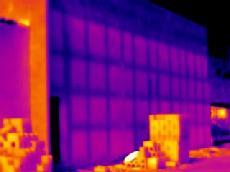ArchiCam
Structural
- Jun 11, 2013
- 6
I have got a 20'x30' CMU building that has some significant horizontal cracking on the east wall. The walls are 7'4" tall and contain NO vertical reinforcement or grouted cells. There is a horizontal bond beam halfway up the wall according to the as-builts, but I have been unable to confirm this. According to the owner the cracking occurred all at once, around the time of a large earthquake. I had the foundation surveyed and confirmed that some foundation settlement has occurred at the east wall. My concern is that if I suggest the foundation be jacked to close the cracking and fix the settlement, the building still has no, or very little, ability to resist another seismic event. Is there an epoxy that could be used in the cracks that would increase the lateral resistance? Are there any other suggested fixes? Below are some more details on the cracks and there are a couple pictures attached.
The south wall at the east end of the building has a large horizontal crack, three courses from the top that wraps around to the window on the east wall. Crack starts in the middle of the block nearest the door latch and steps up to the corner, widening to approximately 3/8”. On east wall, crack remains horizontal to window with width varying from 3/8” to 1/4”. The top 3 courses at this corner have shifted between 1/8" and 1/4" to the south.
The east wall has a horizontal crack above the second course that spans most of the length of the wall with a width between 1/8” and 1/4”.
The east wall has another horizontal crack that starts above the fifth course near the middle of the wall. Crack increases in width to between 3/8” and 1/2” at the northeast corner and wraps around to the north wall.
The south wall at the east end of the building has a large horizontal crack, three courses from the top that wraps around to the window on the east wall. Crack starts in the middle of the block nearest the door latch and steps up to the corner, widening to approximately 3/8”. On east wall, crack remains horizontal to window with width varying from 3/8” to 1/4”. The top 3 courses at this corner have shifted between 1/8" and 1/4" to the south.
The east wall has a horizontal crack above the second course that spans most of the length of the wall with a width between 1/8” and 1/4”.
The east wall has another horizontal crack that starts above the fifth course near the middle of the wall. Crack increases in width to between 3/8” and 1/2” at the northeast corner and wraps around to the north wall.

